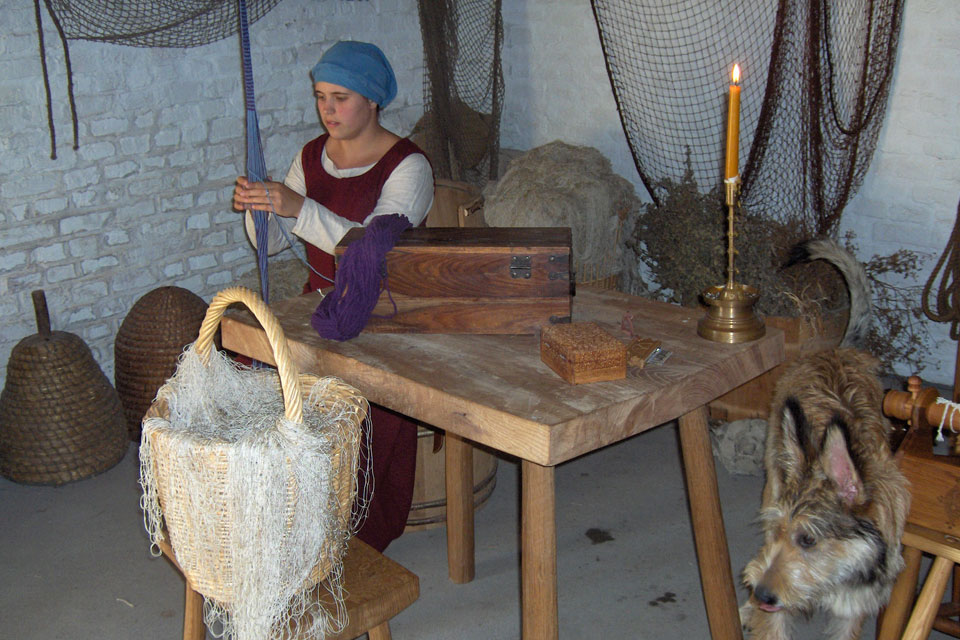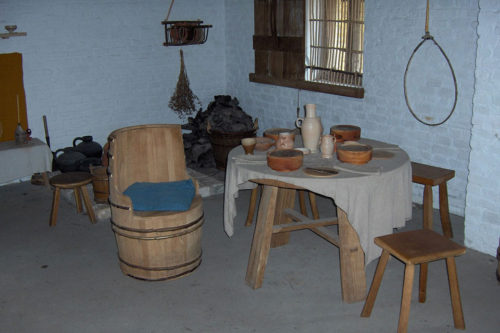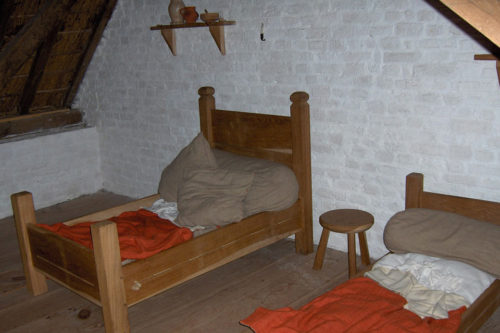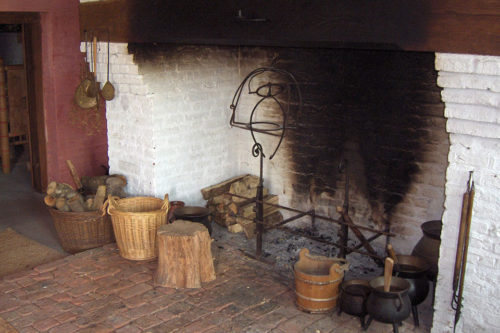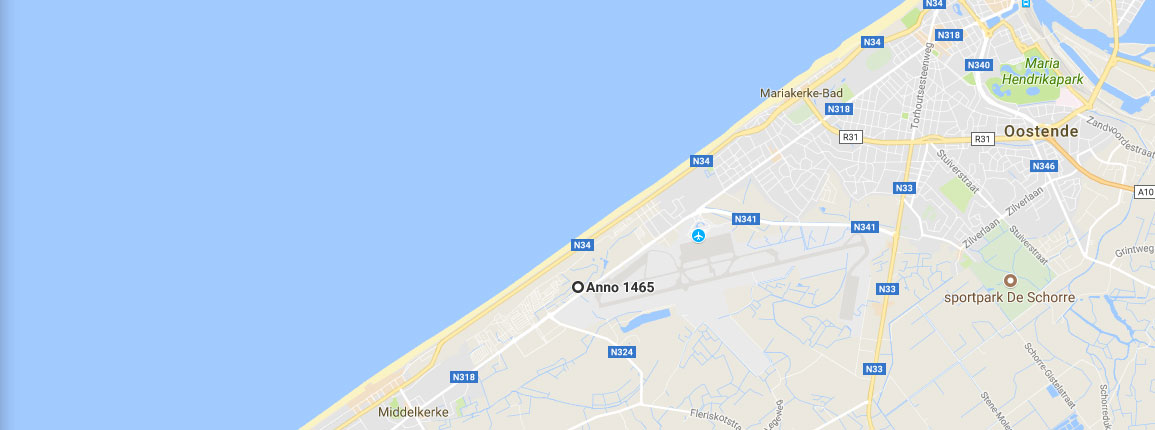Close to airport of Ostend in Belgium lies a proper hidden gem, the Walraversijde archaeological site – a medieval open-air museum
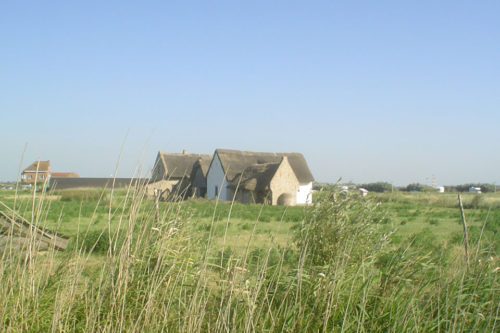
The excavation of Walraversijde, a deserted medieval fishing village, began in 1992. Desertion of the village took place during the religious wars 30-years in the 16th and 17th centuries. Hence, when archaeologist started excavating, they were able to uncover a wide variety of artefacts, which characterised a late medieval fishing community. Together with inspiration from the painted interiors of the Flemish Primitives, excavations have resulted in a faithful recreation of four houses, dated to 1465.Using virtual reality, a visit starts with an audio-visual presentation, in which the history of the Domain of Walraversijde is told. Afterwards, visitors are invited for a walk or guided tour through the reconstructed medieval landscape to experience four fisherman’s cottages or houses:
- the house of the wealthy ship-owner
- the house of the fisherman’s widow
- the house of the fisherman and his family
- the fish smokehouse cum bakery.
Next follows a ‘transitional experience’ where visitors move from a ruin of a village house to an archaeologist’s working space in the 21st century. The excavation site is some metres away, exactly at the spot where archaeologists discovered the four fisherman’s houses.
The visit ends with an exhibition in the museum, where some of the original objects are displayed in their context using the latest interactive techniques.
Walraversijde
At first, Walraversijde seems to have started as nothing but a seasonal mooring place, probably organised by the Counts of Flanders. At such seasonal sites, large catches of herring and flatfish were landed and processed – using the local marine salt or drying, and smoking. Already in the 12th century, however, some fishermen settled along the coast. It is possible that the first of these settlements were organised by the larger towns and ports in Flandern, which increasingly had access to major fleets. With these, they engaged in off-shore ventures and new lucrative marine enterprises.
Excavations have shown that at first – during the 13th and 14th centuries – it consisted of small dispersed groups of houses. When the settlements turned less seasonal, the village was moved inland
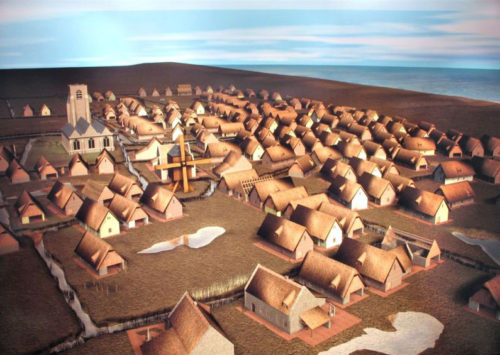
Somewhat later the village moved inland. Primary income came from fishing, but also peat, salt-works and part-time labour contributed to the general prosperity.
As was the case along most of the coast of the Wadden Sea, peat digging eventurally caused great sand drifts. Further, in 1394 the St. Vincentius flood hit the coast, and the village became stranded in front of the dunes on the beach. Once again, the village moved inland. However, when the religious wars finally hit the region, it became deserted, leaving a bonanza for later archaeologists.
What they uncovered was the remains of a wealthy fishing village. At the top of the village hierarchy were the Schliepiden, the captains and owners of the fishing vessels. Manned with up to 20 free fishermen, they brought their own nets and had a share of the profits. These fishing enterprises were highly commercial. Most of the time, the village must have been mainly populated by women, while the men were away on fishing expeditions, e. g. to Newfoundland.
An essential precondition for success was access to local knowledge about pilotage or guidance of ships through the estuaries, the location of “lucrative” fishing spots, the tackle and the conservation methods. Later, when fishing on the Doggersbank started, capital became invested in larger fishing vessels, some of which were financed by people from nearby cities like Ostend.
At its pinnacle, Walraversijde held around a hundred houses, a common “draeyplats” for rope-making, a brewery, a local inn and – from around 1435 –a chapel. The village depended solely on fishing and the salt-pans and was laid out compactly. Farming or even gardening played no role.
The houses were primarily built with bricks and thatched with cane or seaweed. Floors were either covered with sand or laid out with bricks. Some larger houses were fitted with such amenities as brick latrines and coloured glass windows, and might be plastered in red. Ovens and fireplaces were located up to a wall. The artificial light came from bronze chandeliers or ceramic oil lamps.
The lifestyle was – as is often the case in fishing villages – cosmopolitan. For instance, sherds of Spanish lustre wares from Valencia, Màlaga and Sevilla have been found. Some may have been payments for piloting, but other of the rich archaeological pickings may result from privateering, beach-combing and wreckage.
The recreated village and the museum offers a delightful opportunity to delve into the landscape of the Flemish primitives as well as late medieval living in Flandern in the 15th century. Although very close to the airport and plagued by noise, it is still possible to wander around and imagine a lost medieval world.
VISIT:
Raversyde – Walraversijde Museum
Nieuwpoortsesteenweg 636,
Oostende
Belgium
READ:
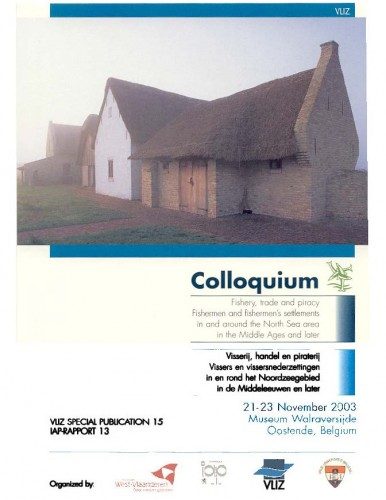 Colloquium: Fishery, trade and piracy: fishermen and fishermen’s settlements in and around the North Sea area in the Middle Ages and later
Colloquium: Fishery, trade and piracy: fishermen and fishermen’s settlements in and around the North Sea area in the Middle Ages and later
Ed by Pieters M, Verhaeghe F, Gevaert G, Mees J and Seys J.
Museum Walraversijde, VLIZ Special Publication 15, Pages 57–59
Understanding A Medieval Fishing Settlement Along The Southern North Sea: Walraversijde, C. 1200–1630
By Dries Tys and Marnix Pieters
In: Beyond the Catch. Brill 2008, pp 91-122
Landscape transformation and social change in the North Sea Polders, the example of Flanders (1000-1800 AD).
By Tim Soens, Dries Tys and Erik Thoen
In: Siedlungsforschung. Archäologie, Geschichte, Geographie, Vol 31 (2014), p. 133-160
READ MORE
Read more about Medieval Fisheries and fishing in ‘Medieval Histories’ 2012 3: 2
